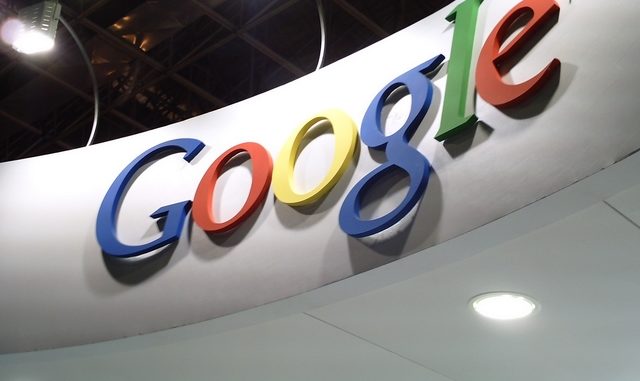
This document aims to compare how a traditional media outlet, The Sydney Morning Herald, and a digitally-born outlet, Mashable, covered a technology-based news story. This analysis will focus on a recent news story where the European Union Commission fined Google AUD 2.4 billion for abusing the online advertising market. This analysis will explore each news story in terms of content production, online delivery, and technical delivery. Suggestions will also be made on how each news story delivery could have been improved.
Mashable
Mashable is a digital-born news publication that, according to its about page, focuses on “technology, digital culture, and entertainment content around the globe”. It was founded in 2005, starting as a simple WordPress blog. Mashable has a significant social media following with 48 million social media followers across a variety of different social media platforms. According to SimilarWeb, Mashable’s target audience is primarily people that are interested in technology news, computers and electronics. While its audience is primarily American, it also has different versions of its publication for different regions in the world, including Australia, India, UK, Middle East, and South East Asia.
The Sydney Morning Herald
The Sydney Morning Herald is a traditional news publication that covers a variety of Australian stories. It was founded in 1831 and has primarily been a print-based publication. According to AdCentre, the Herald’s audience is very diverse, where people of all ages are reflected. Unlike Mashable, it does not focus on a particular topic. Instead, it aims to focus on “the biggest issues in our city, state, around Australia and the globe”. It is considered to be one of the leaders in the Australian news media industry due to its long history and its vast audience.
Mashable story analysis
Mashable published a news story entitled “Google hit with $1.7 billion fine for anticompetitive ad practices“, which reported that the European Commission fined Google 1.49 billion Euros for what the EU commissioner described as “illegal conduct to cement its dominant market position”. This news story was published on March 21, 2019, a day after the EU Commission released their media statement.
The fact that the story was published a day after suggests that the author was given some time to present a more holistic story. This is evident where the author details the previous times where Google was fined twice before under similar circumstances. Hyperlinks are used to refer to previous articles in which Mashable has reported those past fines. Hypertextuality (Bradshaw, 2018) is a driving force for this story because a lot of its content has already been covered in detail either by official EU Commission press releases or by previous journalists for Mashable. Furthermore, the author has used hyperlinks where he has stated financial figure. All of this gives the news story more credibility and completeness.
This story also uses an official social media post from the EU Commission to support its narrative. The twitter post is very prominent in this news story as its size and positioning draw the reader’s attention. The post comes from the official Twitter account for the EU Commission, which gives the story a stronger voice and authority, thereby establishing the serious tone of the story. The author also directly quotes the press release in parts where the EU Commissioner has used strong and highly critical language directed at Google. This also contributes to the serious tone of the article.
Since Mashable is a digital-born publication, it is no surprise that it uses social media very actively. When the story is first opened, a Facebook and Twitter sharing button is shown just below the heading. According to Alexa, these two websites are the most popular western social media sites. However, if the adjacent “plus” button is clicked, it opens up other social media platforms where the reader can share the story as well. Furthermore, if the reader scrolls down the story, the top navigation bar disappears and is replaced by social media sharing buttons. This technical feature suggests that Mashable wants to make their articles as easy to share as possible, so it increases its readership. With more views on the article, there will be more impressions for their advertisers as well.
A lot of advertising content surrounds this news story. This content can take many forms, being a video, image, or animation. The article has several advertising blocks placed between the paragraphs. The content shown in the advertisements is also inconsistent, and the effects can be startling. For example, when a video is shown, it is set to auto play with the volume muted. Now depending on the user’s Internet browser, this can affect the reader’s ability to scroll through the page smoothly, and thus create an unpleasant experience for the reader. The other prominent feature is Mashable’s column to the right of the article. In this column, there is a mix of advertisements and Mashable articles which may not be relevant to the story. Furthermore, the advertisements tend to be highly animated and inconsistent, which may also distract the reader and add to the unpleasant experience for the reader.
Mashable could have placed all the advertisements in a block at the end of the article. The fact that advertising takes up more space on the webpage than the article may indicate the high business needs that Mashable needs to satisfy. However, it should not negatively impact the user’s ability to read the article. Furthermore, the author aims to present this topic in a serious tone, and the flashy and animated advertisements undermine his attempts to do so. If the news content was placed at the top and the advertisements were placed at the bottom, this would create a logical flow where all stakeholders can be satisfied.
The Sydney Morning Herald story analysis
The Sydney Morning Herald published a brief story that is dated on 20th March 2019, the same day that the EU Commission released its media statement. The story is mostly a summary of what the media release has described, but the headline is slightly different where the fine is converted to Australian dollars, to accommodate for its Australian audience.
Unlike Mashable, The Sydney Morning Herald does not prioritise technology stories. This may suggest why the content in this story is written succinctly. There is less advertising on the article, and not many hyperlinks are used. Furthermore, because the article was released on the same day as the EU press release, there is not much detail explored, and thus one might assume that the editor has prioritised the need to inform sooner and quicker, so people know faster, rather than have a substantiative view of the issue being addressed.
In comparison to the Mashable article, there is less advertising and multimedia used to break up the text. The picture of the EU commissioner is the only image used and is most prominent. Unlike the Mashable article, this picture can be expanded by clicking the expand symbol on the bottom right. Social media sharing links are displayed on the top right, but only Facebook and Twitter are available. One useful feature of this piece is the breadcrumb trail on the top left. This helps the reader keep track of where they are on the site, as well as identify the context of this article quickly. In this case, this is a “business” story that focuses on the company “Google”. Overall, the minimal use of media in the story helps the content feel a lot easier to digest.
The technical delivery could be described as minimalistic. One technical feature that reflects this is the text size expansion feature, where the author can increase the size of the font. This suggests that the Sydney Morning Herald aims to be more conscious of readers who are visually impaired. Unlike the Mashable story, the text is double spaced and the story outline covers the entire webpage horizontally. This makes the article the focal point, which helps the reader concentrate on the story. Furthermore using a borderless story allows it to convert well to a mobile platform, and thus the page looks very similar to the desktop version. Finally, the article is easy to scroll, a benefit of minimal media usage.
A possible suggestion to improve the delivery of this story is to use a picture that could express more information to the reader, thereby taking advantage of the expandable image feature. The feature image could have included more people involved in making this decision, other than the EU commissioner. Also, a link to the original press release would have helped add more information to the article. Despite its brevity, it uses a lot of quotes and financial figures, so adding a hyperlink to that press release could have substantiated these points more thoroughly.
Conclusion
Both media outlets present the same news story in slightly different ways, in order to serve its audiences. The Sydney Morning Herald piece aims to inform succinctly as its audience has less of a technical audience. The Mashable piece has a very strong technical audience and thus draws on more detail throughout its story, supported by the use of hyperlinks and social media. Each article also demonstrates how online journalism’s forms and features can be used to reflect the publications culture, audience, and ability to present the same story differently while retaining the core content of the story.
References
Bradshaw, 2018, The Online Journalism Handbook – Skills to Survive and Thrive in the Digital Age, Second Edition
European Commission, 20 Mar 2019, Antitrust: Commission fine Google 1.49 billion euros for abusive practices in online advertising, http://europa.eu/rapid/press-release_IP-19-1770_en.htm European Commission – Press Release, Brussels, Belgium
Binder, 21 Mar 2019, Google hit with $1.7 billion fine for anticompetitive ad practices, https://mashable.com/article/google-eu-antitrust-fine-ads, Mashable
Sydney Morning Herald, 20 Mar 2019, Google fined $2.4 billion by the EU for abusing online ads market, https://www.smh.com.au/business/companies/eu-fines-google-2-4-billion-for-abusing-online-ads-market-20190320-p51607.html




Be the first to comment